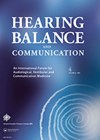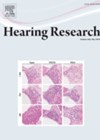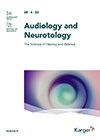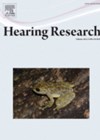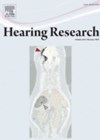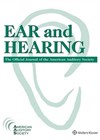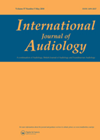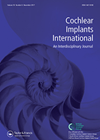
Journal Reviews
The right ear advantage in noise
Relatively little is known about the right ear advantage, particularly in noise. The speech-in-noise performances were assessed in a group of 37 participants with normal hearing via a Matrix Test. Participants were tested binaurally, in a right-ear condition and a...
Ageing Ears
How do our ears show our age? We are all aware of the concept of presbycusis and a plethora of other events that impact our hearing over the passage of time. We are familiar with the standard subjective testing, though...
What type of sensitivity?
It is true that the different types of decreased sound tolerance conditions are, in general, poorly defined and the lines between them blurry. Hyperacusis? Loudness recruitment? Misophonia? Phonophobia? Sensory overload in noise? This paper aims to provide reference data for...
Person-centred care, enhancing audiology student understanding across the globe
Over 200 students registered for a multinational virtual event facilitated by the Ida Institute. The aim was to determine levels of student understanding and approaches to person-centred care (PCC), alongside the opportunity to evaluate the benefits of this approach to...
Vascular disease and sudden sensorineural hearing loss
Oussoren et al performed a systematic review and meta-analyses of current literature on the above topic: specifically, cardiovascular risk factors for developing idiopathic sudden sensorineural hearing loss (iSSNHL), the presence of white matter hyperintensities in patients with iSSNHL and the...
Use it or lose it…
The ageing auditory system: about 15 years ago, you could probably count on one hand the number of research papers on this subject. Now it seems one of the hot topics of discussion and investigation. This is, it seems, quite...
Higher risk and a tailored need
Historically, in audiology there is almost an unspoken understanding that when presented with a musician, a nuanced approach is likely to be required. Previous research has already shown there is a higher risk of noise exposure and accompanying signal distortion...
Inequitable access to cochlear implantation across the UK
Referral rates and uptake of cochlear implantation in the global adult population are low. Five audiology centres across England and Wales retrospectively explored data over a six-month period in late 2019, post implementation of new National Institute for Health and...
How to increase uptake of hearing screening in primary care
Untreated hearing loss leads to an increased risk of dementia and depression. There is currently little evidence to support the benefits of hearing screening in asymptomatic older adults. The main aim of the study was to compare three hearing screening...
Audiologists’ perspectives on their ability to address hearing, social and emotional adult patient needs
Authors suggest there is little evidence that hearing technology addresses patients’ emotional concerns related to their lived experience of hearing and communication difficulty. The study explores the notion of audiologic counselling and discusses the role of audiologists in supporting the...
The decision-making process by parents of children with residual hearing who receive cochlear implants
It can be a difficult decision for parents whose children have residual hearing whether or not to undergo cochlear implantation. Their children may seem to be hearing with their hearing aids, and even in some cases can hear without aids....
Are cardiovascular risk factors associated with hearing loss?
Cardiovascular disease (CVD) risk factors are associated with microvascular damage that can impair molecular transport across capillary walls and cause inflammation and oxidative stress that may damage cochlear structure and function. This study determined, among a population-based sample of Canadian...

